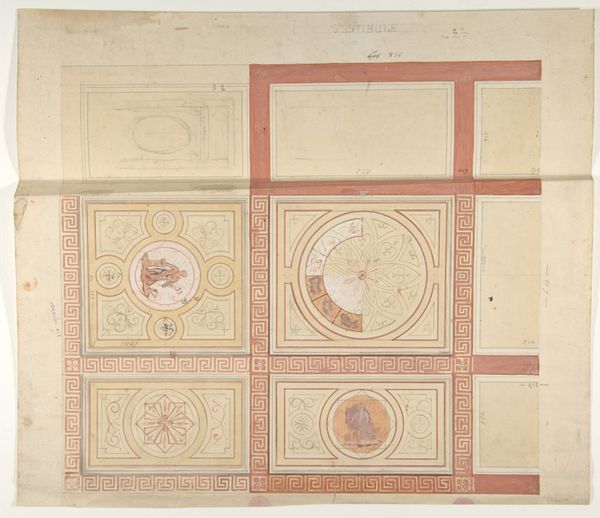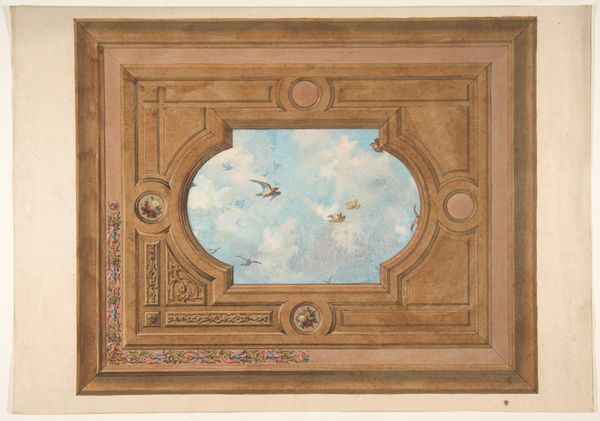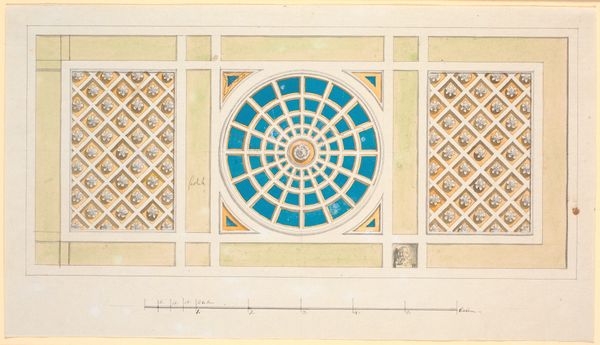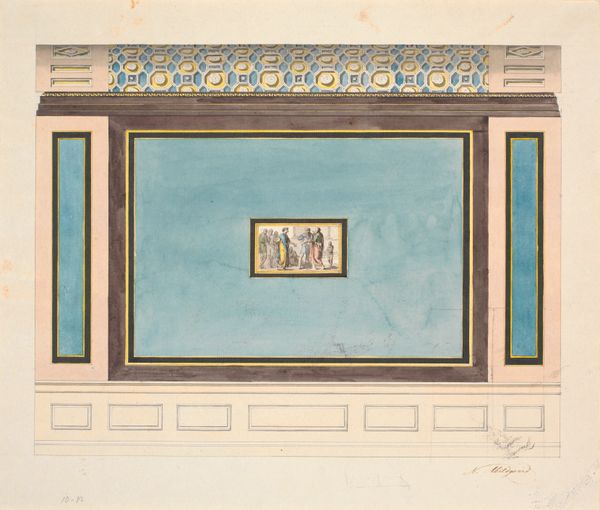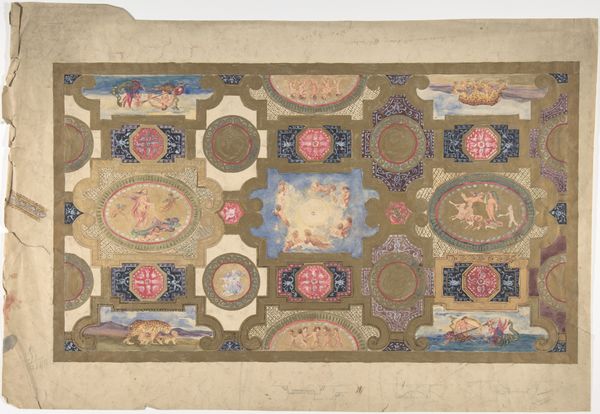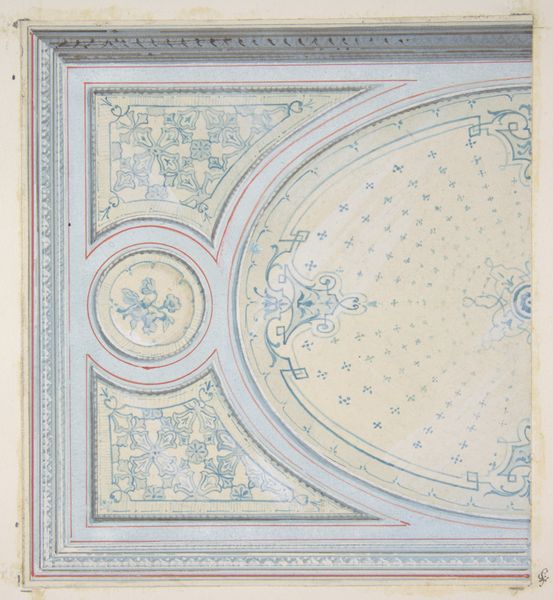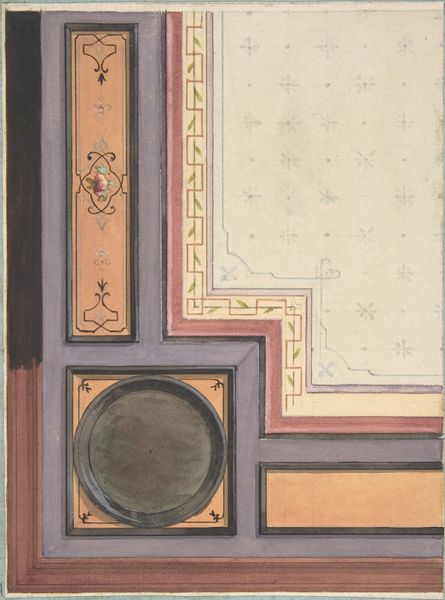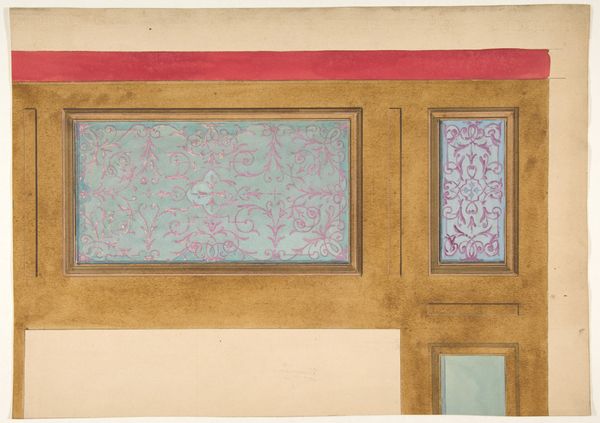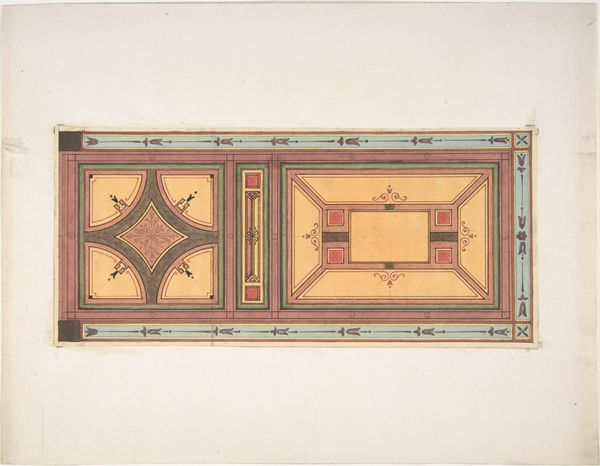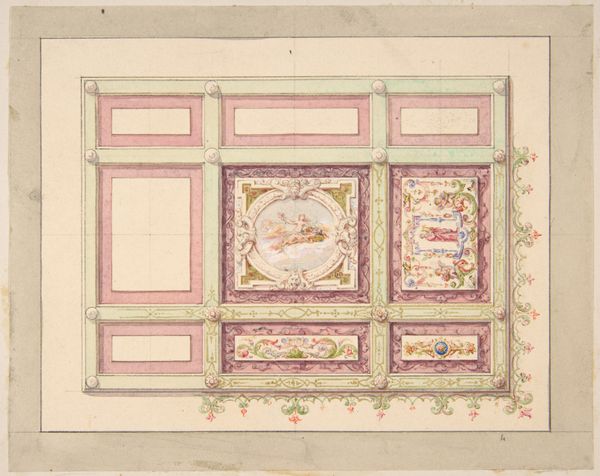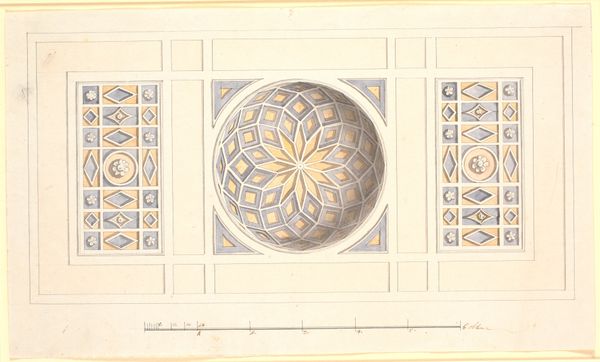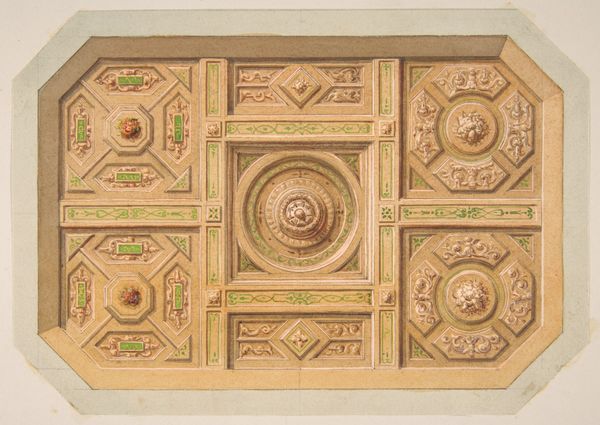
drawing, print, watercolor, pendant
#
drawing
# print
#
watercolor
#
tile art
#
decorative-art
#
watercolor
#
pendant
Dimensions: sheet: 16 1/2 x 15 3/16 in. (41.9 x 38.6 cm)
Copyright: Public Domain
Curator: This is an anonymous 19th-century work, titled "Design for a ceiling decoration," now held at the Metropolitan Museum of Art. It combines drawing, print, and watercolor. What strikes you about it? Editor: I’m immediately drawn to the lightness of it. The colors are delicate, and the composition suggests a space that feels both grand and intimate, as if light itself is being filtered through this structure. Curator: Indeed. Consider the cultural context. This design likely catered to a rising bourgeois class eager to emulate aristocratic tastes, evidenced by the integration of floral motifs and what appears to be a gilded finish within a structured grid. What sort of symbolism do you glean? Editor: For me, the use of floral elements feels directly connected to notions of nature's abundance, subtly suggesting both earthly and possibly spiritual fulfillment within the home. This could also relate to an effort in controlling nature itself by embedding such design in strict geometry. I can see, culturally, this being highly attractive. Curator: Absolutely. Furthermore, the rigid geometry contrasts beautifully with the naturalistic vignettes in each inset, hinting at an attempt to harmonize the artificial world with the organic. Think about how ceilings can be potent symbols: heavenly aspirations mediated by carefully constructed artifice. Editor: And look at the center--empty. Is that intentional, or just a consequence of it being a study for decoration? Is the empty part more significant than the decorated ones? Curator: I would venture to guess that the void central space allows flexibility within the architect’s vision. Depending on a commissioner's wishes, there can be anything there, but on a higher level of analysis this shows an architect controlling the elements of nature through structural balance and symmetry. Editor: I find the tension fascinating - a structured form holding representations of free-flowing natural motifs, mirroring the dynamics between freedom and control, luxury and constraint inherent in society then as now. Curator: A keen observation! It's remarkable how this ostensibly simple design unveils such layers when viewed through different interpretive lenses. It presents viewers then, and now, with curated experiences dependent on our own socio-cultural understanding and memories. Editor: Yes, seeing the emotional impact of a domestic space tied into larger narratives makes you consider how such works served—and continue to serve—as touchstones for projecting value and ideals. Curator: Precisely.
Comments
No comments
Be the first to comment and join the conversation on the ultimate creative platform.
